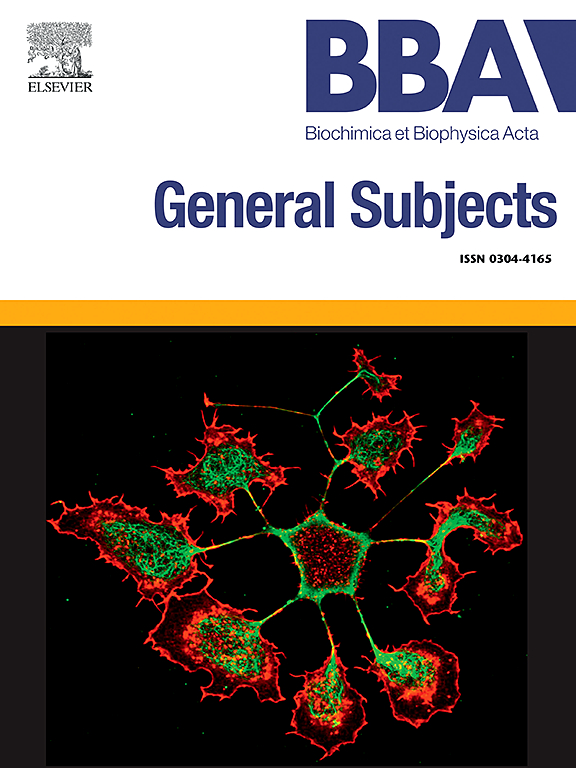Roles of acyl carrier proteins in ladderane fatty acid producing-organisms
IF 2.8
3区 生物学
Q3 BIOCHEMISTRY & MOLECULAR BIOLOGY
Biochimica et biophysica acta. General subjects
Pub Date : 2025-01-11
DOI:10.1016/j.bbagen.2025.130763
引用次数: 0
Abstract
Ladderanes are highly strained hydrocarbons consisting of two or more linearly concatenated cyclobutane rings. Strikingly, ladderane moieties are part of unique fatty acids and fatty alcohols that are exclusively found in the membrane lipids of anaerobic ammonium-oxidizing (anammox) bacteria. These bacteria express a distinctive gene cluster (cluster I) that has been suggested to be responsible for ladderane fatty acid (FA) biosynthesis in addition to a cluster likely involved in canonical FA biosynthesis (cluster III). In the anammox organism Kuenenia stuttgartiensis, cluster I encodes a unique acyl carrier protein (amxACP), whereas the ACP encoded by cluster III (KsACPII) was suggested to be involved in the production of canonical fatty acids. Here we present targeted isotope labeling studies using 13C-malonyl-ACPs to distinguish the roles of these ACPs. While in-vitro 13C incorporation into ladderane FAs was not observed, we show that KsACPII indeed functions in palmitate biosynthesis in the anammox organism Kuenenia stuttgartiensis. We present an experimental framework for continuing studies into fatty acid biosynthesis in anammox- and similar organisms.
酰基载体蛋白在脂酰脂肪酸产生生物中的作用。
Ladderanes是由两个或多个线性连接的环丁烷环组成的高度应变的碳氢化合物。引人注目的是,阶梯烷部分是独特的脂肪酸和脂肪醇的一部分,这些脂肪酸和脂肪醇只存在于厌氧氨氧化(anammox)细菌的膜脂中。这些细菌表达一个独特的基因簇(簇I),该基因簇被认为负责阶梯烷脂肪酸(FA)的生物合成,此外还有一个可能参与典型FA生物合成的基因簇(簇III)。在厌氧氨氧化菌Kuenenia stuttgartiensis中,簇I编码一种独特的酰基载体蛋白(amxACP),而簇III编码的ACP (KsACPII)被认为参与典型脂肪酸的生产。在这里,我们使用13c -丙二醇- acp进行了靶向同位素标记研究,以区分这些acp的作用。虽然没有观察到13c在体外与ladderane FAs的结合,但我们表明KsACPII确实在厌氧氨氧化菌Kuenenia stuttgartiensis的棕榈酸盐生物合成中起作用。我们提出了一个继续研究厌氧氨氧化生物合成脂肪酸和类似生物的实验框架。
本文章由计算机程序翻译,如有差异,请以英文原文为准。
求助全文
约1分钟内获得全文
求助全文
来源期刊

Biochimica et biophysica acta. General subjects
生物-生化与分子生物学
CiteScore
6.40
自引率
0.00%
发文量
139
审稿时长
30 days
期刊介绍:
BBA General Subjects accepts for submission either original, hypothesis-driven studies or reviews covering subjects in biochemistry and biophysics that are considered to have general interest for a wide audience. Manuscripts with interdisciplinary approaches are especially encouraged.
 求助内容:
求助内容: 应助结果提醒方式:
应助结果提醒方式:


